
Flood and Dry Weather --Vol.13--

How brightly the sun is shining! I feel like going into the water to know whether fish are there or not.
Close to the Opposite Bank
It was 9 o'clock in the morning but the sun was shining brightly like in the early afternoon. The white bank was also dazzled by the sunbeam. Two hours had passed since I changed my Floating line into Intermediate. So far no fish appeared or nothing happened.I was standing a bit down the head of the pool. The river was narrow around there and the heart of the stream was flowing along the opposite bank. I was fishing down, casting the fly at the heart of the stream. The water was the most transparent I had ever seen. The sky was too bright. I had no feeling that I would be able to catch fish.
When I half gave up, I saw a splash 50m downstream at the edge of the opposite bank. There was a salmon. I had sometimes seen salmon staying around there at the time of a little bit lower water.
Is that salmon staying there or still going upstream along the bank? I was not sure yet. While I stared at the water surface near the splash point, a similar splash was caused about 20m upstream again.
The salmon was still going upstream. It was swimming along the opposite bank. Immediately I retrieved the line and cast it towards 10m upstream from the new splash point. The casting distance was about 30m. I extended my back cast as high as possible, then threw down the line to the water. Consequently the line moved straight from the high sky to the water surface. That was how I could throw the fly into the narrow space between the heart of the stream and the bank.
I did it! As soon as I cast the line, I lifted the rod high and tightened the line. Immediately a splash was caused beyond the line. A little while later the reel reversed violently. My salmon was more than 13lb. It was male, unusual for this size. Mary Anne could take nice films of its swimming figure, thanks to the strong sunbeam and the transparent water.
Actually everything went very well. I had never imagined such lucky fishing really happened. I laughed in spite of myself. It's great!
I could catch a fish beyond the heart of the stream, although it was only 30m away. Furthermore I aimed at one spot and succeeded in casting the fly there. The salmon jumped at my fly about 3 seconds after it settled on the water.
Only if we succeed in settling the fly with its good posture and figure, the fish will respond to it immediately. Then we can fish beyond the heart of the stream. My long-awaited dream really comes true now although I have still got some points to improve. So I thought.

Crystal-clear water in Vinsnes. I felt as if I had been fishing char in the source area in the North Japan Alps.
Vinsnes at Midnight
Ten days had passed since Mary Anne and I came back to the River Gaula in July. We had exactly the same pure blue sky every day and the temperature became higher and higher. Consequently the water level became lower and lower and the river seemed to be getting into low water.Near the River Gaula area in Norway, it is light all day long around the summer solstice. It gets dark only when bad weather, whether day or night. When perfectly clear it is too light even at midnight, which afflicts anglers. However, after the middle of July night hours come back. It is the darkest between midnight and 3 a.m. That means those three hours give us a marvellous opportunity to fish low water under fine weather.
It is dark but still light enough to put the fly to the line without a light except for rainy days. It is the same darkness that allows us a lot of catch of trout at evening rise. That most fascinating darkness lasts several hours.
Two days later we got a chance to fish Vinsnes from 12 o'clock at midnight. As we had half given up catching salmon under the light sky, we wanted to take advantage of this chance by all means. When we arrived at the beat, the water temperature was as high as 16 degs C. Our predecessors left there, saying that there was no bite, jump or sign of staying fish.

How lucky I was to catch a salmon under such severe condition! The male salmon bit Rosemary at the edge of the opposite bank.
It suddenly got dark as soon as we started fishing. The bank dried up due to fall of water spread downstream. Dry white pebbles were gleaming and it was light around there like in the daytime.
The mountain and the opposite bank were completely in the dark mist. My old light-coloured rocks were dotted among there. I was in the water, although not so deep as in the daytime. It was dark around but I had no difficulty in wading because I could clearly see the whitish pebbles on the river bed.
When I passed one-third way from the head of the long pool, the river became wider. The heart of the stream was still flowing along the opposite bank but it was moving apart from the bank side little by little. At the time of low water some salmon stay along the bank from here to downstream.
From my last lucky experience one thing was clear to me; only if I succeed in casting the fly properly I will be able to catch a salmon beyond the heart of the stream. It does not matter whether a salmon stays there or is on the way to go upstream. So far I did not see any quiet jump characteristic of staying fish. There was no sign of fish, either. However, who can say there is no fish? In order to prepare for a chance in a million and also as my practice, I extended my back cast high and powerfully threw down the fly at the edge of the opposite bank again and again.

At 12 o'clock at midnight. I felt some signs that something was going to happen in the dark.
As the distance between the opposite bank and me was farther, I had to cast the fly to the front of the opposite bank, instead of casting down and across. That made it easier to cast the fly at the edge of the opposite bank. The problem was that the line crossed the heart of the stream at almost right angle after it settled on the water.
To avoid the line drag, I lifted the rod as soon as I cast the line. When this method was not so effective, I flapped the rod to move the fly, too. As I repeated to cast the line in that way I succeeded in making the fly drifting as soon as it settled on the water. It also kept its good posture for 4 seconds on average. Before long I came in front of a noticeably big rock at the opposite bank.
-- To be continued --
- NET SHOP INFORMATION
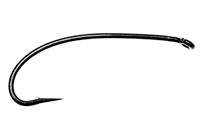
SL6 Black Spey Hooks
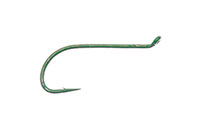
DU3 Limerick Spinner Hooks
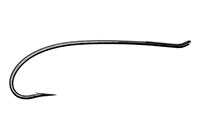
SL4 Single Bartleet Hooks
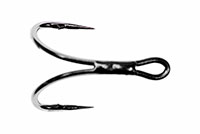
XD1 Tube Fly Double Hooks
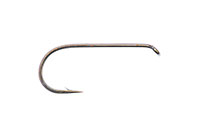
DD2 Flat Perfect Hooks
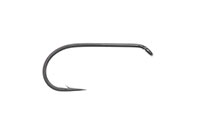
DD1 Black Terrestrial Hooks
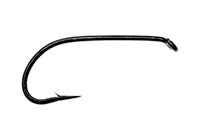
TD4 Old Limerick Wet Hooks
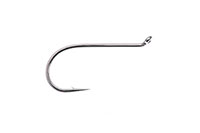
DU1 Silver May Hooks
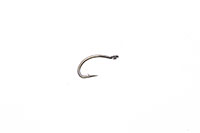
MU1 Flat Midge Hooks
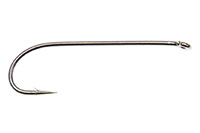
LD3 Long Limerick Hooks
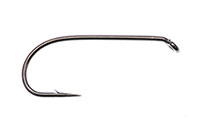
TD2 Summer Sproat Hooks
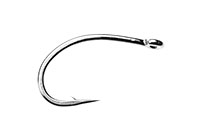
XS1 Tube Single Silver Hooks
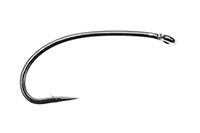
TD6 Siver Sedge Hooks

SL5 Black Spey Hooks

DU3 Limerick Spinner Hooks
- TROPHY CLUB
- FLY SHOW
- EXHIBITION
- MASTERS`
- FLY DRESSING CONTEST Archives
- TRAVELLER Archives
- TACKLE IMPRESSIONS Archives
- ANGLERS` PHOTO GALLERY Archives
- ----------------------------------------------
- トロフィークラブ
- フライショー
- エキシビション
- マスターズ
- フライドレッシング・コンテスト・アーカイヴ
- トラヴェラー・アーカイヴ
- タックル・インプレッション・アーカイヴ
- アングラーズ・フォトギャラリー・アーカイヴ
株式会社サワダ 185-0021 東京都国分寺市南町3-13-4
SAWADA'S INC. 3-13-4 Minamicho, Kokubunji, Tokyo 185-0021, Japan
写真・ドキュメントの無断転載を禁じます。
All the images and documents found on this site are owned by Ken Sawada and may not be used without permission.
But, link to this site is FREE.
Copyright © 2000 - 2024 SAWADA'S INC.. All rights reserved.
SAWADA'S INC. 3-13-4 Minamicho, Kokubunji, Tokyo 185-0021, Japan
写真・ドキュメントの無断転載を禁じます。
All the images and documents found on this site are owned by Ken Sawada and may not be used without permission.
But, link to this site is FREE.
Copyright © 2000 - 2024 SAWADA'S INC.. All rights reserved.
